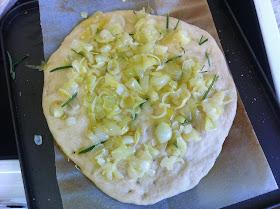31/7/13
Today I received a folio of thank you notes from the children. Too many to include here, so I'll just quote a few:
"Thank you for show me how to make bread. Now my family is inspired to make bread with me! Thank you for getting them inspired. Thank you for the really fun task! It's fun to make shapes. I have been using my imagination and making fantasy animals.
Best wishes, Bianca"
"Thank you so much for teaching us how simple breadmaking actually is. I was so excited when we got to work on our bread. Thank you for teaching us some shapes and designs that could mould out bread into. The bread tasted so lovely. From Abigail"
"Thank you for helping me to make bread. Now me and my freinds can make bread on are own (sic). I like bread. But I love baking. My desire is to be like britains best cooks paul hollywood and mary berry. From Georgina"
"Thank you for spending your morning teaching us how to make bread. When the bread was cooked it tasted divine. From Michael."
5/7/13
Once again, towards the end of the summer term, it's time for my annual visit to my daughter's school where she teaches a year 5 class, for a morning's breadmaking.
This is the fourth year I've done this. The first year we began I taught 45 children - about 2/3rds of the year group - the second we had 77, which was all the year group and last year, the third, we managed 79 children.
(The recipe we followed plus many more pics can be found in the link to last year's breadmaking.)
This year we increased that to 82, which is my new record. It could have been as many as 88, but several children had blotted their copybook and were denied the breadmaking which was seen as something of a privilege. :(
We pretty well repeated last year's timing spot on, commencing at 8.50 with the first group of 30 children - and the last batch of bread came out of the oven at 12.50. It was hectic, but great fun was had by all.
I could not have done this without the excellent support I received from my daughter Emma and 2 learning assistants, Karen and Amanda, who assisted the students with their mixing, kneading, shaping the rolls; washed up between groups, baked the risen dough - and generally assisted me in every way possible. So a huge thanks to you guys!
I was warned beforehand that not all of the students behaviour would be of the highest and that there may be some disruption at some point - but I saw none of this. IMO the students that I saw behaved impeccably, and we all worked co-operatively towards a common goal. A thoroughly enjoyable morning from my point of view.
And from the students themselves - they were all keenly appreciative, and I heard from one of the other year 5 teachers just how happy all the youngsters were when they turned up for their next lesson.
As is my wont in these sessions, I give the children some homework as the session ends. This is to go home and find someone who doesn't know how to make bread, and teach them what they have learned this morning. When I mention homework, inevitably a few faces fall, but when I tell them what it is, their faces brighten up as they begin to think of who they can teach breadmaking to!
In busy sessions such as these, I often forget to take pictures, and it wasn't until all the children had finished and I took over the oven duty that I remembered - and managed to take 4 pics:


















































